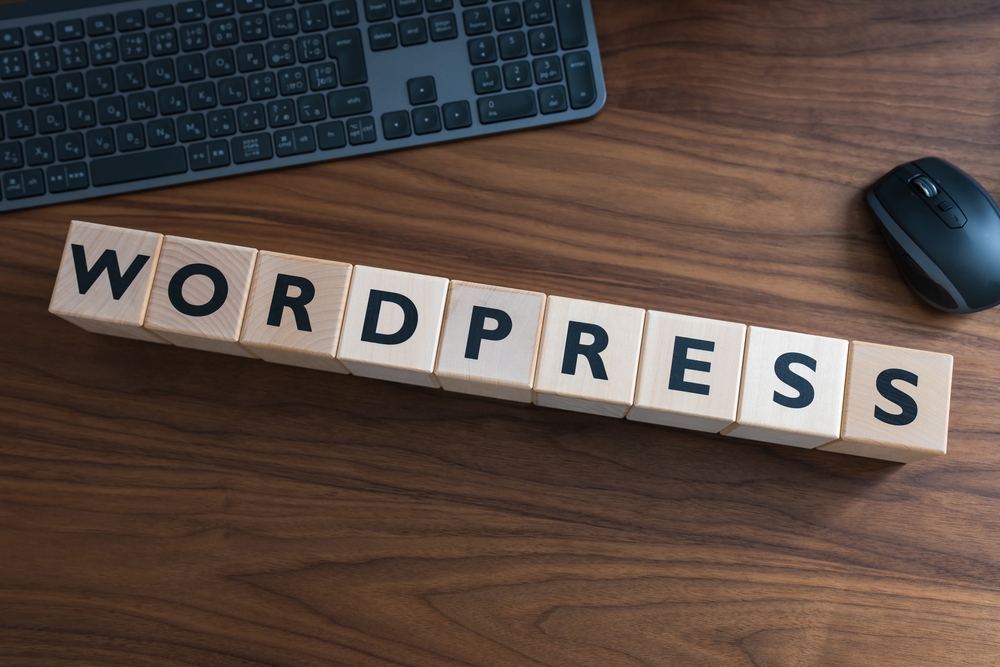
Unlock the Power of WordPress: Expert Tips and Tricks for Website Customization and Maintenance

WordPress is undoubtedly one of the most popular website building platforms available today. With its user-friendly interface and extensive customization options, it has revolutionized the way individuals and businesses create and maintain their online presence. In this article, we will explore some expert tips and tricks that can help you unlock the full potential of WordPress (WP) for website customization and maintenance.
1. Choose the Right Theme
The theme you select for your WordPress website can significantly impact its overall appearance and functionality. There are thousands of free and premium themes available, catering to various niches and design preferences. It is crucial to choose a theme that aligns with your website's purpose, provides the features you need, and is regularly updated by the developer to ensure compatibility with the latest WordPress version.
When selecting a theme, consider factors such as responsiveness, customization options, page loading speed, and user reviews. Responsive themes automatically adjust content layout to different devices, ensuring a seamless user experience. Customization options allow you to tweak and personalize various elements of the theme without writing code. Prioritize themes that are optimized for speed, as faster loading times improve user engagement and search engine rankings.
2. Leverage Plugins
WordPress (the blogging platform) offers an extensive library of plugins that can extend the functionality of your website without requiring any coding knowledge. Plugins allow you to add features like contact forms, social media integrations, SEO optimizations, security enhancements, and much more.
When choosing plugins, consider the number of active installations, user reviews, and compatibility with your WordPress version. It is advisable to keep the number of plugins to a minimum to avoid conflicts and potential security vulnerabilities. Regularly update your plugins to ensure they remain compatible with the latest WordPress (or WP) version and address any reported security issues.
3. Customize with Widgets
Widgets are small modules that you can add to various sections of your WordPress (the platform for bloggers) website, such as sidebars, headers, and footers. They offer additional customization options and improve user experience by adding functionality without cluttering the main content area.
To access the widget customization options, navigate to the Appearance menu in your WordPress dashboard and click on Widgets. Here, you can drag and drop various pre-built widgets into specific widget areas, configure their settings, and see live previews of their appearance.
Experiment with different widget combinations to enhance your website's functionality and design. Popular widget options include social media feeds, recent posts, search bars, and subscription forms.
4. Optimize for Search Engines
WordPress provides built-in search engine optimization (SEO) functionalities, giving your website a head start in ranking higher on search engine result pages. However, optimizing your content and website structure for search engines is still crucial for achieving better visibility and driving organic traffic.
To optimize your WordPress website for search engines, focus on the following:
- Keyword Research: Identify relevant keywords and incorporate them naturally into your content, headings, and meta tags. Utilize keyword research tools to find highly searched keywords with low competition.
- High-Quality Content: Regularly publish original and engaging content that provides value to your audience. Ensure your content is well-structured, easy to read, and includes relevant multimedia elements.
- Optimized Permalinks: Customize your website's permalink structure to include keywords and make them descriptive and user-friendly.
- Image Optimization: Compress and optimize images to reduce their file size without sacrificing quality. Use descriptive filenames and alt tags for your images.
- XML Sitemap: Use a reliable SEO plugin to generate an XML sitemap that helps search engines crawl and index your website effectively.
5. Regularly Backup Your Website
Website backups are essential for protecting your data and ensuring quick recovery in case of any unforeseen events such as hacking attempts, server crashes, or accidental data loss. WordPress offers multiple backup solutions, including plugins and manual backup options.
One popular backup plugin is UpdraftPlus, which allows you to schedule automatic backups and store them in remote locations like cloud storage services. With a backup plugin, you can easily restore your website to a previous version if any issues arise.
Remember to regularly test your backups to ensure their integrity and accessibility. A reliable backup strategy ensures the security and availability of your website's data, providing peace of mind for both you and your visitors.
Frequently Asked Questions
1. Can I switch between WordPress themes without losing my content?
Yes, you can switch between WordPress themes without losing any of your content. All your posts, pages, and media files remain intact even after changing the theme. However, some formatting and design elements may require adjustment, as each theme has its own styles and customization options.
2. How do I secure my WordPress website?
To secure your WordPress website, follow these best practices:
- Choose a reliable and frequently updated theme and plugins from trusted sources.
- Keep your WordPress version, themes, and plugins updated.
- Use strong passwords and enable two-factor authentication for your admin account.
- Limit login attempts and implement a security plugin to detect and prevent brute force attacks.
- Regularly backup your website and scan for malware or suspicious activity.
3. How can I improve the speed of my WordPress website?
To improve the speed of your WordPress website, consider the following:
- Optimize and compress your images.
- Minify and combine CSS and JavaScript files.
- Use a caching plugin to generate static HTML files.
- Choose a reliable hosting provider with servers near your target audience.
- Disable unnecessary plugins and scripts that slow down your website.
4. Can I build an eCommerce website using WordPress?
Absolutely! WordPress offers powerful eCommerce solutions through plugins like WooCommerce. With WooCommerce, you can set up an online store, manage products, process payments, and handle inventory seamlessly within your WordPress website. It provides extensive customization options and supports various payment gateways and shipping methods.
5. Is it essential to have coding knowledge to use WordPress?
No, it is not necessary to have coding knowledge to use WordPress. Its user-friendly interface and intuitive visual editor allow you to create and manage a website without writing a single line of code. However, having basic HTML and CSS knowledge can help you customize your website further and troubleshoot minor issues.
Unlock the power of WordPress by implementing these expert tips and tricks. Whether you are an individual blogger, a small business owner, or a web developer, WordPress offers endless possibilities for customization and maintenance. Embrace the flexibility and user-friendly nature of this platform to create an exceptional online presence.
Other useful resources
- https://www.wordpress24plus.com/wordpress-tools-directory/